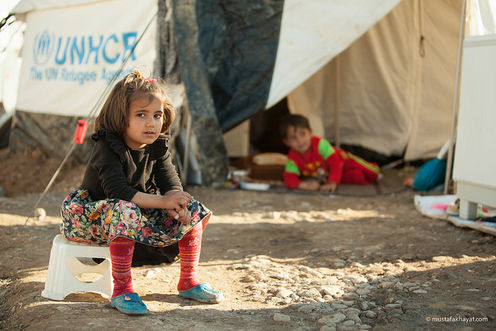
Conflict continues to afflict the globe at a seemingly undiminished rate. The world’s attention is focused on Syria and Iraq in an escalating conflict that has resulted in about three million refugees from Syria and nearly two million internally displaced people within Iraq.
Less attention is focused on the many smaller conflicts. Within the Asia-Pacific region, continuing low-level conflicts – such as those between the Indigenous populations of West Papua and Indonesia, and sectarian violence in Bangladesh and Myanmar – attract little attention but continue to cause disruption and hardship, and often death.
Alongside the host of human tragedies, conflicts challenge efforts to ensure health, security and access to basic health care for the world’s poorest and most vulnerable populations. Such populations are disproportionately represented in conflict-affected regions: chronic conflict causes chronic poverty and poverty causes conflict.
Dysfunction and disruption
Health systems are disrupted by conflict and insecurity in multiple ways. Health workers flee conflict zones where they are often prized assets, liable to be captured and put to work by rebel armies. Infrastructure is damaged. Records are lost and destroyed.
Injuries from the violence itself may only be the tip of the iceberg of ill health caused by conflict. Infectious disease thrives amidst population disruption. People come into contact with unfamiliar disease vectors to which they have not developed resistance. Crowding in refugee and internal displacement camps creates conditions ripe for disease transmission. Conditions in such camps are also often associated with domestic, sexual and gender-based violence, drug abuse and alcoholism, and mental health problems.

In many cases, conflict arises in areas where health systems have long been dysfunctional or barely functional. Take Sierra Leone, which is struggling to contain Ebola. In 1980, 20% of local government areas had no government facilities. Public health expenditure then declined by 60% between 1980 and 1987. This occurred before, and perhaps contributed to, the outbreak of civil war in 1991.
In Syria and Iraq, in contrast, conflict has devastated previously functional health systems. Syrian health statistics had been improving steadily for decades but the conflict has had a severe effect on resources available in the system. The numbers of health staff and hospital beds available have been reduced by more than half.
The Assad regime has reportedly systematically attacked health facilities in opposition-held areas, resulting in the deaths of health professionals and the destruction of infrastructure. The country’s pharmaceutical production system has been badly damaged.
The Iraqi system has continued to function but a once excellent system has been eroded by the first Gulf War, international sanctions, the second Gulf War and now the effects of displaced populations.
Such conditions affect people with all kinds of health conditions and medical needs. The disruption of the drug distribution network sends those dependent on regular medication to the black market. Those with acute conditions may lose all access to services.
Rebuilding health systems after conflict
Once peace is re-established, there is a window of opportunity to construct a health system that is less constrained by entrenched political interests. I’m researching these processes as part of the ReBuild consortium, which is building the evidence base to support health-system development in conflict-affected states. ReBuild works with partners in Cambodia, Sierra Leone, Uganda and Zimbabwe.
A number of countries including Afghanistan and Cambodia have used contracts between their health ministries and non-governmental organisations to deliver primary care. There is some evidence that this has enabled a more accessible and effective primary health system to operate when government capacity was weak.

In Cambodia, for instance, international non-government organisations have been able to manage staff to focus on outputs such as immunisation rates and protocols of care for children. Governments of states that are unaffected by conflict, by contrast, are often unwilling to give up direct provision and the associated degree of control of resources.
Getting investments right in the potential window of opportunity may set the direction of the system for some time. However, the task is formidable. In the immediate post-conflict period, countries are often swamped by multiple humanitarian agencies, presenting challenges for often weak government actors to manage. The agencies’ sheer numbers and diversity require complex co-ordination.
Staff members of these organisations tend to be internationally experienced but locally inexperienced, requiring that their strategies are well-adapted to local realities. The ReBuild consortium is helping to build local capacity to translate internationally sponsored visions for the future health system into feasible and well-adapted reform programs.
The complexities of health system development in the aftermath of conflict can be daunting. Aid to conflict-affected countries has historically been lower than to others like them, presumably because of the conflict. However, the post-2015 development agenda will not tackle the issues affecting the world’s poorest and most vulnerable if it neglects conflict-affected states.
Barbara McPake is Research co-Director of the ReBuild Consortium which is funded by the UK Department for International Health and Development.
